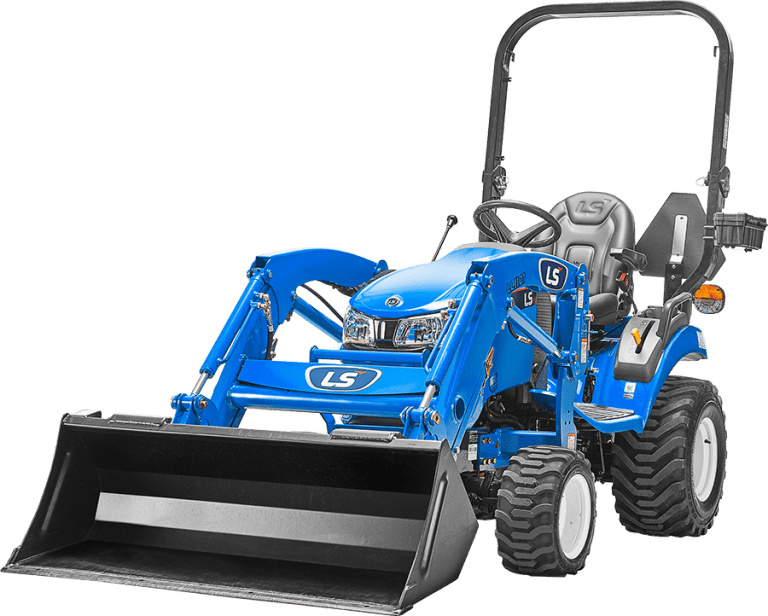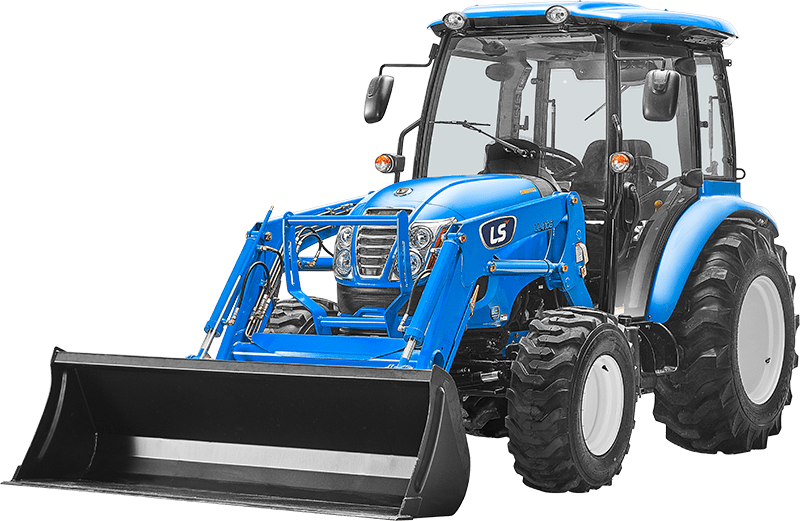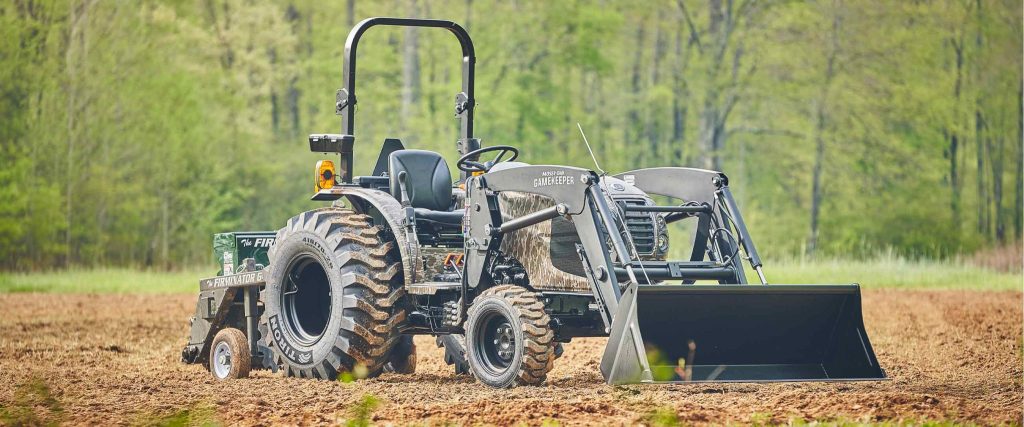On my farm, on the journey to cross one thing off the to-do list, I often add two more. I quite commonly overestimate what I am going to be able to accomplish in a given period. For that reason, just about any tool that regularly saves me time will pay for itself over the life of ownership. A tractor is no different. Around my small farm, there are some jobs that I just couldn’t complete without it. Other jobs could be, but not without a significant dose of my blood and sweat complemented with teaching my young sons some words I don’t want them to know yet. The bottom line is you need a tractor, but getting the best tractor for small farm needs means you’re going to need to see around some corners.
Sizing The Best Small Farm Tractor
Small is a relative term so while I consider my 200+/- acre farm small, you might not. To get us heading in the right direction on size for small farms you are going to be looking into sub-compact or compact tractors. Utility tractors are most likely going to be overkill for your needs. You can confuse yourself trying to decipher the perfect size tractor so here is a simple framework to help you determine what you need. You need to first figure out what types of work you are going to do, then find a tractor whose specifications solve that problem. The best tractor will handle everything you throw at it, and if it doesn’t, you’ll find yourself back at the dealership before you know it.
Small Farm Tractor Specifications To Consider
I have a fairly analytical type of mind. When I pack for a trip I start with my socks and work my way up till I get to my hat. I like to look at a tractor the same way. Let’s start with the front-end loader and work our way to the 3-point hitch to determine what you might need.
Front-End Loader Considerations
At my farm, we have an off-grid setup. Right now, that means hauling water from town in a 275-gallon IBC tote. A full load weighs 2,200 lbs plus the weight of the tote. Add to this that the manufacturer’s specifications for front-end loader lift capacity are measured “at the pins” so this means that the further something sticks out from that point, the more your lift capacity is diminished. When we want to move that tote off the trailer and into its resting position, it’s more than my current tractor can handle. This means having to offload water into a second container which takes this job from a 10-minute job to a 45-minute job. Add that up and over the years a tractor with a higher lift capacity can save me a ton of time.

While most of my needs on the farm could be solved with something like the LS MT122 Sub-Compact Tractor, The lift capacity on that tractor is 1,007 lbs. For my needs, something like the LS MT357 Compact Tractor with a lift capacity of 2,680 pounds would be better. Your mileage may vary, but when you are thinking about your farm, ask yourself what the heaviest load is that you will need to pick up, both now and into the future.

In addition to the lift capacity, it is vitally important to assess if you will need hydraulically operated front-end loader attachments. You can certainly add a third function to a front-end loader, but you might want to go ahead and have that equipped from the factory if you know you will want to operate something like a grapple. And why wouldn’t you? Tractor grapples are awesome.
Small Farm Tractor Engine Evaluations
Moving back from the front-end loader we arrive at the engine and transmission. One thing that has always confused me is tractor horsepower. I’ve always heard people talking about “powerful tractors” with horsepower ratings that wouldn’t push a car fast enough to get a state trooper excited. So what gives? Tractors may lose 30% of their engine horsepower at the power take-off, so you must ensure that the 3-point implements you intend to run do not require more horsepower than the tractor has at the PTO.
Have a look at the spec sheets for the aforementioned LS MT357 and LS MT 125. As you can see, they do an excellent job of spelling out the power loss at the PTO. Make sure your tractor will get the work you want done in a reasonable time frame by making sure you’ve got enough power at the PTO. Remember, despite the therapy that a day of tractor work provides, the time savings in getting your jobs done is what makes purchasing a tractor make sense.
Tractor Transmissions
All that power does you no good if it isn’t mated to a transmission that delivers it in a way that you are comfortable with. I didn’t grow up on tractors, so a hydrostatic transmission was user-friendly for me to get started with my work on day one. I can’t see a reason why I’d ever want to switch but the work you need to do is likely different than mine. Most sub-compact tractors come with a hydrostatic transmission, but if you want options like a gear drive or Powerclutch you may need to step up to a compact tractor.
Who Doesn’t Want 4WD?
Every vehicle I own is four-wheel drive, so I’m a bit biased. That being said, you don’t know you’re about to get stuck until you’re already stuck. I’d rather have 4WD and not need it than not have it at all. And I can’t say for sure, but it seems the market feels the same. In fact, every tractor that LS makes has 4WD.
Tractor Cabs
I recently hired out some destumping work on my property to an excavator and bulldozer team. Early on in the job, the operator sent me a video of a swarm of yellow jackets attacking his excavator cab with an intensity that left me emotionally harmed. It’s moments like these when I start to think about upgrading to a tractor with a cab. Maybe it’s the extreme cold in the North or heat in the South, or maybe it’s just keeping the elements “out there”, but either way, if you need a cab you’re likely going to need to step up to a compact tractor.
What’s The Best 3-Point Lift For A Small Farm Tractor?
Just like with the front-end loader example, a tractor that can’t lift all of the 3 point implements you want to own is likely going to put you back at the dealership. So on the quest to find the best tractor for your small farm, research what the implements weigh that you might want to run. Say your goal is implementing no-till planting practices on your farm. If this is the case, you are going to want to purchase a no-till drill. Looking at the capacities in the PH Outdoors G-Series no-till drills below, you can see that as the width of the drill increases, the weight increases, and the acres planted per hour increase.

Another area to consider in your 3-point lift is what you want to do with the implements. Do you have a lot of roads or a long driveway you want to create or maintain? Your first day of attempting to adjust the top and tilt on your box blade might have you begging for rear remotes. This functionality gives you the ability to run hydraulically operated 3-point implements like a hydraulic top and tilt kit. Again, it all adds up to time savings.
Other Points To Consider In A Small Farm Tractor
You are going to break your tractor. You are going to need to maintain your tractor. The final things to consider are the tractor’s overall weight and whether or not there is a dealership fairly close to you. Because my tractor exceeds a safe towing and payload capacity on my truck, I’ve often needed to have my local dealer come out to my property and haul my tractor in for repairs and maintenance. While this is a necessity for me until I upgrade my tow vehicle, it’s also really convenient when needed. When considering your next tractor, make sure to take a look at the service locations and make sure you’ve got enough towing capacity to haul it around.
Tractors are awesome. They are useful, and fun, and I think they make you cool. Heck, you can even make a statement and show your support for wildlife conservation by buying one wrapped in Mossy Oak Camo. They are also not a toy. They should be operated with the utmost care and an eye on safety. By thinking about the work you want to do, and making sure you get a tractor built to that standard as well as with all of today’s modern safety equipment, you can ensure that your days spent tractoring end with a sense of accomplishment and not frustration.




